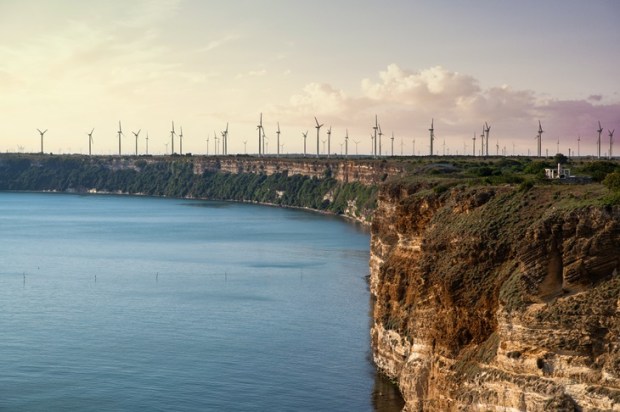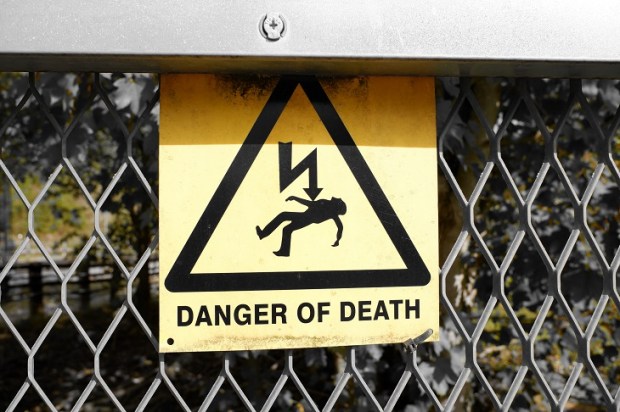An endgame is now underway in the renewable energy scam that has been responsible for destroying the nation’s electricity industry as a low-cost, efficient and self-managing sector.
Though, in Churchillian terms, countering the debilitating effect of the self-imposed cancer is beyond the end of the beginning it has a long way to go before we have anything like the market we once had.
The seeds of this malignancy were planted almost at the birth of the competitive market’s creation 20 years ago. At that time, having created a market based on some 30 suppliers, perhaps a half dozen of which were prominent, the conditions for competition to provide efficient outcomes were in place. Fundamentally coal-based, the market also had some fast start gas and hydro to allow the peak balancing required of a product with considerable diurnal and seasonal shifts in demand (and occasional disruptions in supply).
However almost most from the beginning, in 2001, regulatory requirements were placed on suppliers, particularly with requirements to include small but growing proportions of particular sorts of renewable energy.
The green concerns about global warming formed part of a troika. The second branch of this was technological hubris (the claimed inevitability of renewable energy’s march towards outperforming fossil fuels). The third branch stemmed from creating a commercial advantage, as enterprises, like moths to a candle, were attracted to the certain returns renewable energy offered, a benefit reinforced by deflections of green opprobrium of such politically correct expenditures.
Initially, these measures sought to impose upon taxpayers and consumers seemingly minor obligations to purchase renewable energy. “Two per cent of additional energy” was the first introduction of renewables by the Howard government. This was quantified at 9,500-gigawatt hours, actually over five per cent of supply. Howard later commissioned the Tambling report that recommended the total be lifted to 16,000 GWh but, sensing the destructive venom of the genie he had let out of the bottle, he placed it on the back-burner.
Although Howard stood against further incursions, within his own party others were pressing for more subsidies and state governments were augmenting the targets – Steve Bracks in Victoria declared that he would not stand by while Australia saw its opportunities for leadership in the coming green industrial revolution slip away. Other state premiers were equally vocal and Malcolm Turnbull was an eager champion.
Green energy in the form of wind and solar, though it has become less expensive, once it is required to provide the firmness inherent in fossil and hydro supplies, costs $110-150 per MWh. Coal in a new plant costs about $50 per MWh; legacy plants can survive on less but this would not justify refurbishment investment to maintain them in long-term operation.
Until the dam-burst of green energy forced the closure of major power stations in South Australia (the Northern) and Victoria (Hazelwood), the claims that renewables would augment supply and cost consumers little were credible. But that was only because the costs imposed on legacy plant by giving precedence to new subsidised supplies in dispatch were hidden and took time to manifest themselves. With high fixed and low marginal costs, legacy plant could be profitably operated by running down the capital. Eventually, this takes a toll on overall costs, especially when, in the case of Hazelwood, considerable sums were necessary to remove asbestos.
Closure of Hazelwood was tragic but it is difficult to consider any worse act of economic vandalism than that of the South Australian government, which not only encouraged the closure of its last coal station but promptly dynamited it to foreclose any chance of its resurrection.
The upshot has been a doubling of wholesale prices, from $40 to $80 per MWh. Under existing policies, these will probably increase further until they correspond to the costs of wind at $120 per MWh. In the process, system reliability is also degraded. The costs to households are a lift in electricity bills of about one-third but the cost to commercial users are far greater and must force the closure of many factories and other activities that produce internationally tradable goods and services.
At first, attempts to resolve the price and reliability shocks stemming from renewable policies were to seek out smart ways of absorbing the damage they were creating. People were recruited: Professor Finkel as Chief Scientist, Ms Zibelman as market manager and latterly Kerry Schott as head of a new acronymous regulatory agency. Their solutions: batteries, pumped storage, demand response, smart meters may have some palliative benefits but fail to comprehensively address the damage.
Recognising this is Tony Abbott, again proving his formidable skills as a politician, at least when not in office, he is setting the Coalition’s agenda and now has wide support for his view of the folly of renewable energy subsidies.
Energy Minister Josh Frydenberg clearly recognises the unfolding disaster. But he has a Prime Minister who is a firm believer and constituents who are unready to recognise the nakedness of the renewable king enclosed in non-existent invisible fabric.
Frydenberg sees his task as being to “fool enough of the people enough of the time” to extricate the nation from its perilous self-inflictions. In doing so, he promotes renewables while seeking to have a new coal plant built. Facing the terrifying prospects of the policies he has promoted, the PM is forced to acquiesce but will likely insist on unnecessary costs of low carbon emissions plant from any investment that receives government support.
Labor has been more active in supporting green energy and has a further problem. The Party is reliant, directly and indirectly, to the tune of about $5 million a year upon funding from the industry super funds, the directors of which are largely ALP appointees and union affiliates. The government claims that some $23 million a year accrues to unions from these superannuation funds.
Without this, the political campaigns the unions pursue, largely to the benefit of the ALP, would not be possible. Union superannuation funds have invested heavily in subsidised renewable facilities, attracted by the “certainty” of a government guarantee and the predispositions of many board members towards the technology. Loss of support from the industry superannuation funds would be a difficult blow to the ALP.
Even for the Coalition, extraction from the renewables policy will not be easy. The first task is to remove the poison as soon as possible and rectify the most serious damage that is being done.
It is no longer possible for the government to simply disengage. The optimal approach requires four programs:
- Terminate all subsidy payments with immediate effect. It is not sufficient to allow the existing program to run its course bringing about 33,000 GWh of subsidised large-scale renewable energy by 2020. That would involve some 17 per cent of the market being subsidised; already with just over half of this in place, catastrophic consequences – doubling of prices, deterioration of reliability, an investment freeze on low-cost new plant – are apparent. The promoters of renewable energy misled the politicians, media and the public into believing their subsidised power would soon be able to stand on its own feet and provide low-cost, reliable electricity; now is the time to face the consequences.
- Call for tenders for a government contract for low-cost despatchable (i.e. coal) energy from a new plant equivalent in size to the 2,500 MW that has been scrapped as a result of the renewable program; like all market interventions, this involves risks including the penalty it imposes on all existing generators who do not have the benefit of such long-term contracts.
- Penalise via Commonwealth grants those states which have and intend to continue with excessive increases in coal royalties and which maintain major restrictions on gas exploration and development.
- Terminate all payments from the budget that involve energy subsidies.
Some $7.4 billion of spending or committed expenditure was “invested” in subsidised renewable plant in 2017 alone. That expenditure was in response to regulatory incentives and direct government disbursements (some $5 billion last year alone) to foster a form of investment that is not only twice as expensive as the production it displaces but also prevented commercial investment in plant.
Unless those “malinvestments” are allowed to unwind with attendant costs to their owners, the burden others are bearing will, at the very least, hamper recovery from their effects.
The fall-out will be felt elsewhere. The nation’s biggest energy company, AGL, not for the first time under incompetent management, is becoming recognised as a pariah firm contributing to the market destruction by propagandising and subsidising anti-coal activists while reaping super-profits of some $1 billion a year from the forced closure of rival plant. EnergyAustralia has taken a lower profile but it too propagandises the green myth.
Moreover, its owners, the conservative Hong Kong business CLP, ruthlessly acts against managers of overseas subsidiaries only when profit forecasts are missed; EnergyAustralia is a beneficiary of coal power at Yallourn (1450 MW) in Victoria and Mount Piper (1,400 MW) in NSW and will see a profit surge masking its wasted renewable energy spending.
Whatever the fall-out one thing is certain: no politician will ever be called into account for retailing the now discredited renewable energy nirvana. That’s just the way things are.
The wasted expenditure involved in renewable subsidies can never be recouped; it represents a permanent and irretrievable reduction in national wealth and living standards.
Above all, in transforming the world’s most competitive electricity supply industry into one of the world’s most expensive systems it has brought about a deindustrialisation that will have a lasting effect.
Alan Moran’s latest book, Climate Change: Policies and Treaties in the Trump Era, is published by Connor Court Publishing.
Got something to add? Join the discussion and comment below.
Got something to add? Join the discussion and comment below.
Get 10 issues for just $10
Subscribe to The Spectator Australia today for the next 10 magazine issues, plus full online access, for just $10.


























Comments
Don't miss out
Join the conversation with other Spectator Australia readers. Subscribe to leave a comment.
SUBSCRIBEAlready a subscriber? Log in